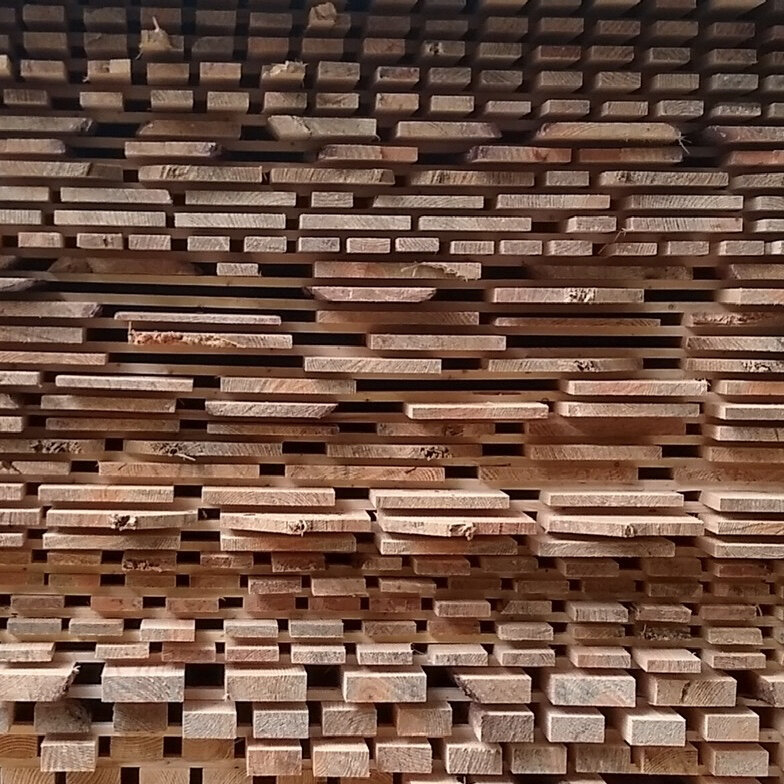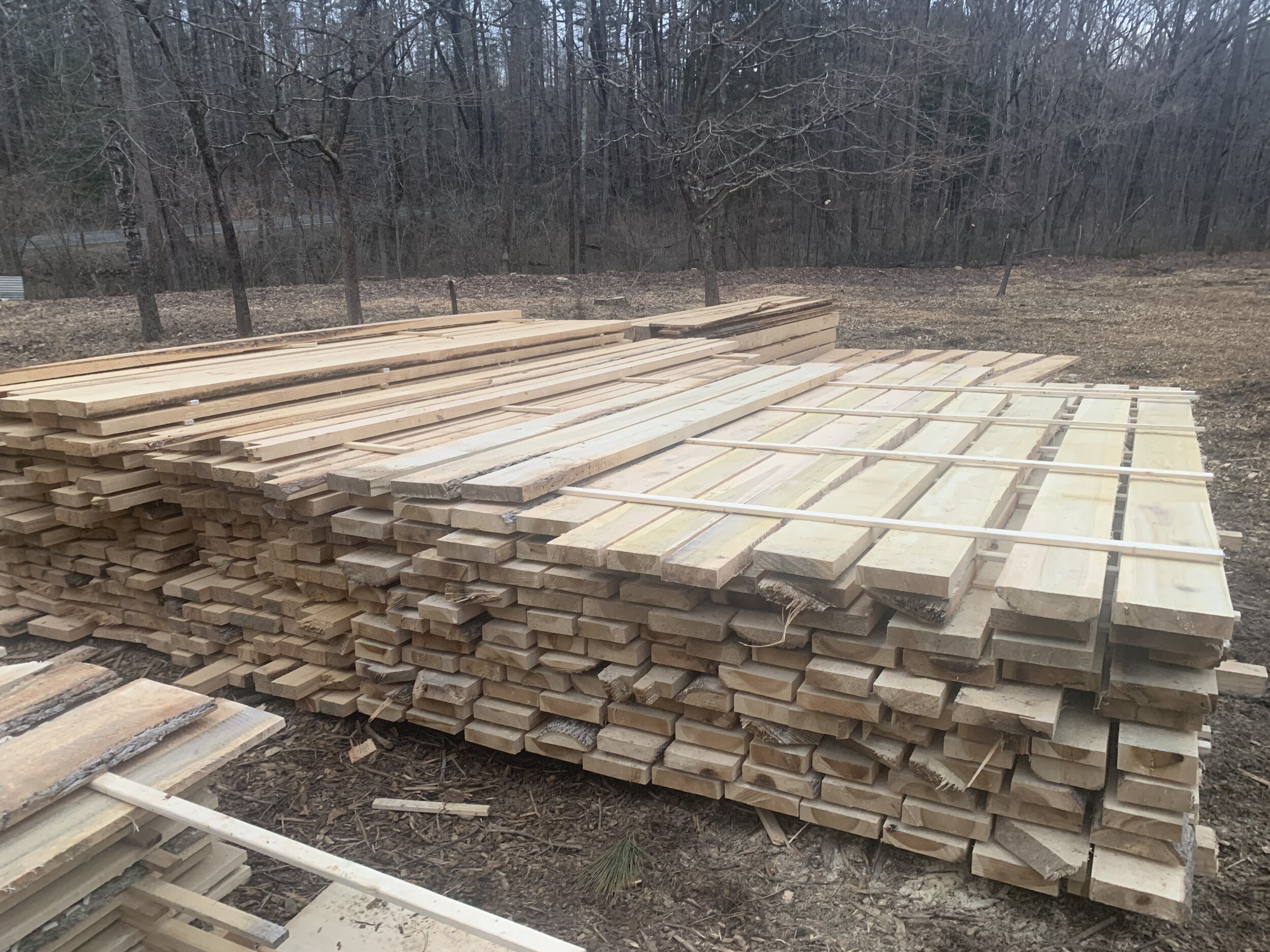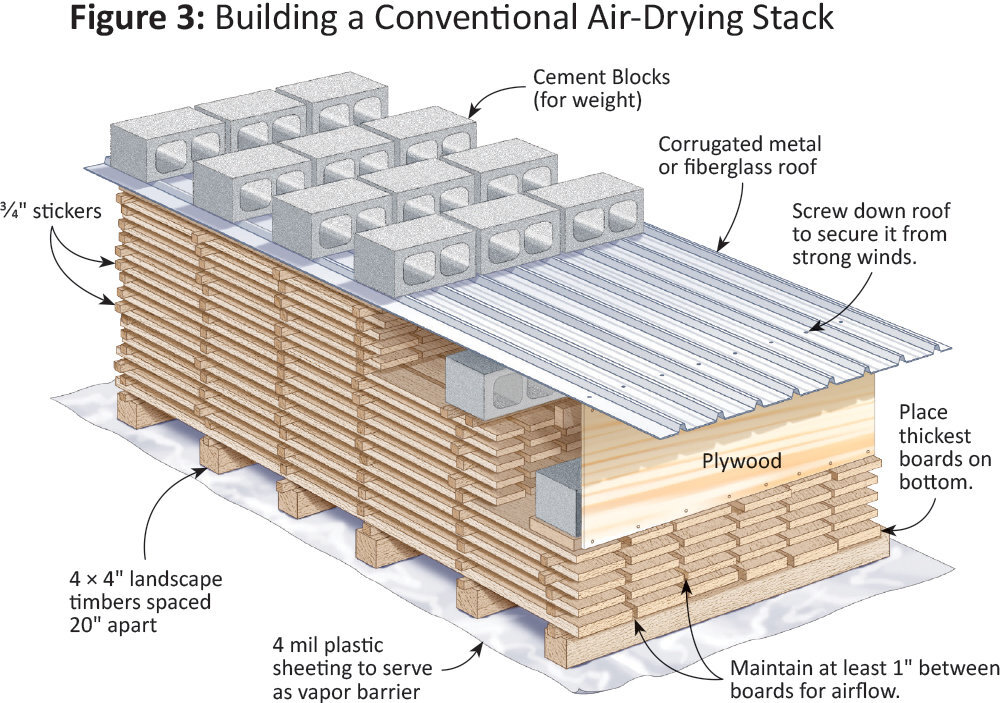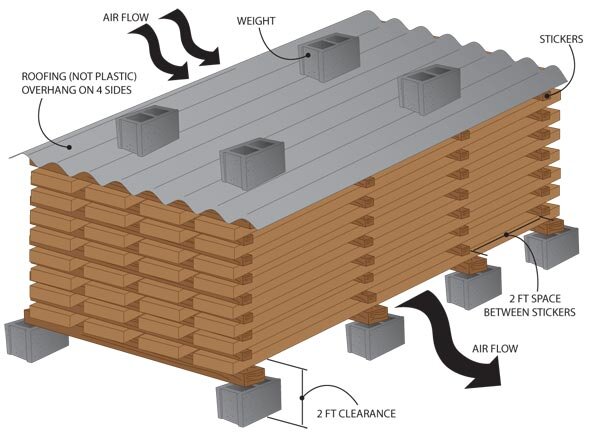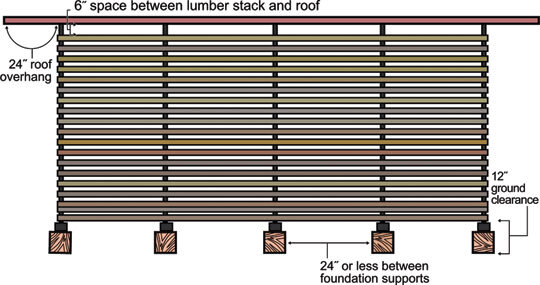
How to Dry Your Lumber
Drying your own lumber can feel challenging at first, but it becomes easy after you’ve learned the basic concepts and done it a few times. In short, we want to stack and cover your lumber as soon after milling as possible. In between, each layer of lumber we will want to put “stickers” or uniform thin pieces of dry wood. I like 1x2s. These are spaced about 24” apart and enable air to circulate through your lumber stack. Before I explain the concepts, take a peek at some sample wood stacks.
Basic Drying Concepts and Dimensions
There’s a lot of information about stacking and air-drying lumber and, in many cases, it’s easy to let the perfect be the enemy of the good. There are three important things to know: first, your lumber will conform to whatever shape you stack it. Therefore, you really do need a level spot. By level, I do not mean flat: Your lumber can be at angle— so long the tilt is uniform. And I’ve found that 1/4” is a sufficient margin of error. Second, air-flow matters. Your stack can be in a garage, basement, or warehouse; however, an outdoor shady spot may be best due to good air-flow. Third, you' are going to want to align your foundation’s cinderblocks with your stickers. If you don’t, the weight will be displaced unevenly across your lumber and cause warpage. Take a peek at these different pictures for some examples.
YouTuber and sawyer Matt Cremona has a good video about how he prepares the ground for his lumber piles. In my experience, this is the most time-consuming part of preparing your stack. I like to use a piece of steel (like Matt’s ladder trick) to get the 4x4s level. I’ll add that your eye can be very accurate at telling which base boards may be out of level. Leaning down to look across the surface of the 4x4s can get out most problem spots. On occasion, I’ll have my laser level and can shoot it across your lumber stack frame to double check your level.
For concepts regarding drying, check out the first two pages of this OSU document. And here’s a good article and another if you want to do a deep dive.




